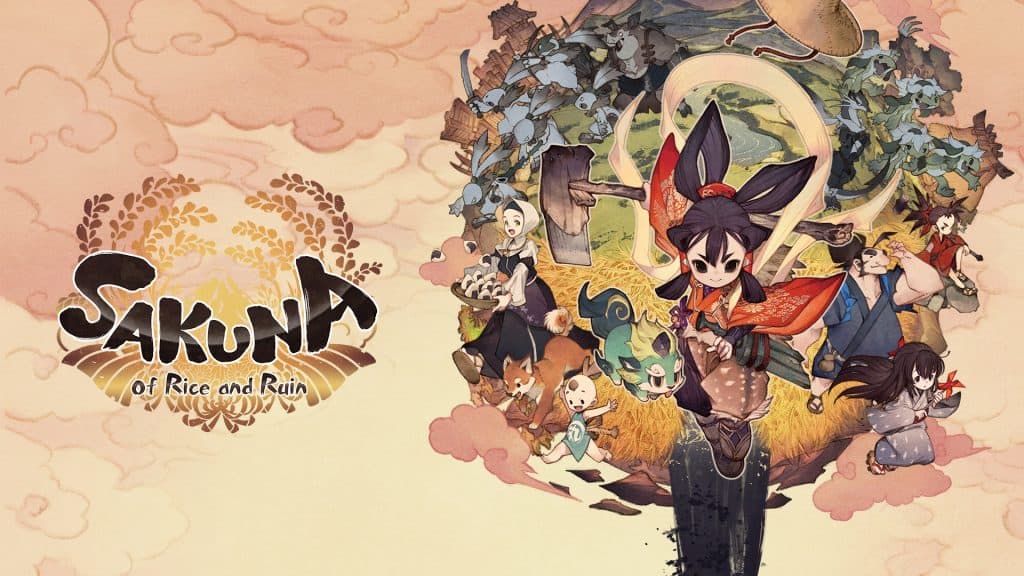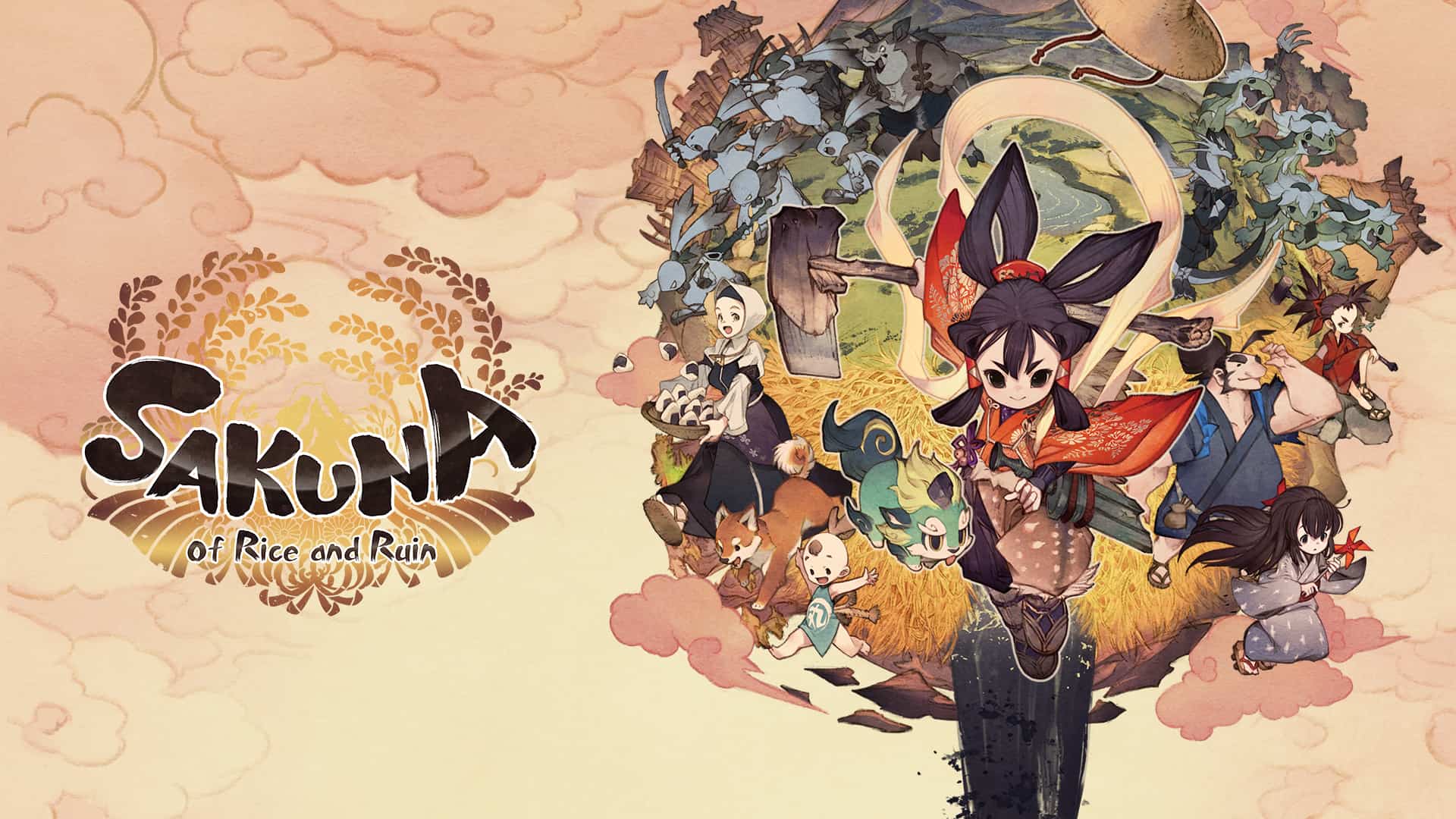Table of Contents
amazon Sakuna Of Rice and Ruin reviews
Sakuna: Of Rice and Ruin – From ancient times, farming has always been a noble profession, associated with the survival value of people regardless of how civilization develops.
However, people often imagine farming as one of the most difficult occupations in the world, staying up late at night, getting up early, feet covered in mud…
To give gamers a fun, friendly farming experience, the Harvest Moon (or Story of Seasons) and Rune Factory series is both “master” names so far; with a core, gameplay focused on farming, harvesting, breeding… – jobs that turn out to be… “brain tire” as much as “farming” in real life.
However, the games mentioned above are mainly “farming”, with the processes being greatly simplified and later on, the “healthier” is thanks to the help of dwarves or advanced machines.
For players to have a more realistic experience with the art of “growing rice”, Edelweiss has created Sakuna: Of Rice and Ruin – a game that can be said to “raise the art” of the “farming” repertoire to the climax.
Received quite a lot of positive reviews, so what did Sakuna: Of Rice and Ruin with its unique plowing experience conquer players thanks to?
The plot in Sakuna: Of Rice and Ruin is also quite “weird” when leading players into a spiritual world of ancient Japan.
Here, the world is divided into two main “realms”: Gods and humans.
The story begins on a harvest festival day, the day when both humans and gods have to offer rice tribute to the Great Goddess.
The main character, Sakuna, is the child of the god of war and the goddess of the harvest, so it’s not surprising that she’s extremely smug, snobby, and unconcerned.
Some strange event caused a bunch of refugees to enter the realm of God, and in their hunger, they snuck in to eat rice in Sakuna’s warehouse.
Drunk, angry, and panicking, Sakuna accidentally… burned the whole rice warehouse, angered the Great Goddess, and exiled her to Hinoe Island to quell the demon riots that had suddenly proliferated very strongly recently.
Although reluctant, Sakuna still had to join the mortals “wrapping” on the demon island, and from here her amazing journey began.
Basically, in Sakuna: Of Rice and Ruin, the player only grows one thing, which is… rice.
However, do not be in a hurry to underestimate it, because the game brings the actual rice-growing process from real life into the game, “replicating the original”.
From a pinch of rice seed “as capital” initially, players have to wait for germination, then sow the seed – sowing too close is also bad but too far is not good, they must drain water into the field – keep the water level just enough.
where can you get a Sakuna Of Rice and Ruin online
Sakuna: of Rice and Ruin – Nintendo Switch: Buy it now
Sakuna: of Rice and Ruin – PlayStation 4: Buy it now
Sakuna: of Rice and Ruin – PlayStation 4 & Immortals Fenyx Rising – PlayStation 4 Standard Edition: Buy it now
The moment the golden rice flowers on the field outside bring joy, it also brings a chain of troubles that follow: from harvesting, drying, threshing, pounding husks, seeding… players will undergo a perfect process to get round, fragrant white rice grains on your dining table.
Indeed, just playing through one season in Sakuna: Of Rice and Ruin, players will have a profound experience of the hardships of their grandparents when they worked in the fields for generations to get fragrant rice.
But if that’s all, it turns out that Sakuna: Of Rice and Ruin is a “Farming Simulator ver 2020” game?
It should be remembered that Sakuna’s main mission when coming to this Hinoe island is to exorcise demons and grow rice to solve the immediate problem of survival.
The fighting mechanism of Sakuna: Of Rice and Ruin is a “scenery” horizontal perspective, with a few climbing and jumping elements.
Players will alternate between normal attacks and strong attacks to destroy the enemy.
Not only “expanding” the richness in gameplay, but the developer also added depth to this richness by including the unique characteristics of each character, as well as introducing special elements for the game each character skill every time the player upgrades them to a certain level.
This allows one player’s character’s move to be completely different from another player’s character’s move, depending on their preference.
Interwoven into the combo chains are skills that will be gradually unlocked during the game.
The number of skills in Sakuna: Of Rice and Ruin is not too much, but most of them are very useful for specific situations, such as air-to-air or against heavily armored enemies.
Sakura’s magic scarf is also a powerful tool to help her jump high, change direction in the air or tie up enemies, creating beautiful combos and “hands-on”!
The two elements “cultivation” and “fighting” in Sakuna: Of Rice and Ruin can be likened to two sides of a coin, they are closely linked and support each other smoothly and delicately.
Specifically, the quality of the rice and the meals will determine the strength of Sakuna, while the fact that Sakuna is strong enough to defeat the monsters will determine what kind of extra materials she can collect to craft, build, and cook.
Referring to Sakuna: Of Rice and Ruin but ignoring the excellent graphics of the game is a huge omission.
So far, Edelweiss has made a pretty good impression on players thanks to its solid graphics array (for example, in Astebreed), but it is clear that with Sakuna: Of Rice and Ruin, the company has raised things to a higher level.
Sakuna: Of Rice and Ruin is set in ancient Japan, but not exactly, but the game interweaves its illusory features.
So although the costumes, character creation or architecture, and houses in the game look quite comfortable and familiar, it still has interesting highlights that create their very own quality.
Creating the characters in the game, specifically the mortal “brothers and sisters” accompanying Sakuna, at first glance feels quite “sinking”, if not trivial.
However, through the way the plot leads and the opening dialogues about each person’s memories, we feel that the designs are extremely suitable for them, whether from facial expressions, and hair to clothing and personal items.
Sakuna herself was originally a child goddess who was pampered too much, so whether she put on a divine outfit or a tight farmer’s shirt, she still exuded a characteristic smug, unpleasant look.
However, the deeper you play into the game, the more you understand the difference between the two “realms” and the things Sakuna has to go through next to mortals, and the easier it is for players to empathize and love her.
Regarding the environmental landscape, Sakuna: Of Rice and Ruin divides Hinoe island into large “plates” with distinct topographical characteristics: coastal area, forest edge, cave area, swamp area… In, Each region is divided into small areas, and although using the same landscape and environment, they all have completely different designs and structures.
In general, the game screens in Sakuna: Of Rice and Ruin meticulously care for both in terms of materials, lighting, and sundry details.
Sakuna: Of Rice and Ruin would be an excellent game, with enough caliber to compete with other AAA blockbusters, if it weren’t for some annoying details – though small, but quite easy to catch.
First of all, the combat mechanics of the game, although it is done quite well, there are “embarrassing” places that are difficult to understand.
This can be expressed by saying that between attacks, or when switching targets, the game appears “pauses” that are very light, but enough to make the “high” feeling of the player.
Sakuna: Of Rice and Ruin is a fairly large game with many interwoven mechanics, creating considerable depth.
But the way the game introduces features or explains how things work is very shy.
This makes those who have a hasty, fast playstyle… will soon be “stagnated” because… ahead of their time, playing to places that the game has not explained!
In addition, A. I (artificial intelligence) in the game is also a big problem.
Enemies in Sakuna: Of Rice and Ruin often appear very crowded and diverse in types, but their behavior, as well as the variation in how they fight, are very… poor!
Many times the writer encounters the scene where the enemy is just standing a small stream from Sakuna, but instead of jumping over to attack, they just stand there mechanically “wiggling!”
After all, it is the interface design of Sakuna: Of Rice and Ruin that is a bit untidy, “less sharp” compared to the overall graphics and its too beautiful world.
The information and task indicators outside of each area are displayed very “idly” in the background, there are no frames or borders to link them, and sometimes the font feels “old Japanese” in the game also creating a feeling of being a bit difficult to read, especially when the text is next to the number.

